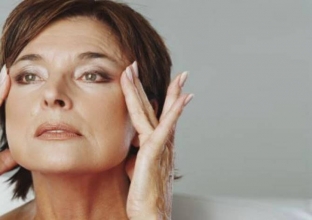In order to choose the right methods of dealing with the enemy called "Old Age", you need to know him by sight. To do this, you need to figure out what type of aging your skin belongs to and determine the appropriate rejuvenation technologies. In a previous article, the finely wrinkled type of aging (first type) was described in detail, characterized by dry and wrinkled skin, which is also thinned and prone to rosacea. This article is devoted to the deformation type of aging and methods of combating the growth of signs of aging. There are also muscular and combined types of aging. Because aesthetic medicine professionals have developed many technologies that will help maintain a youthful appearance for years to come,
The second type of aging – deformation typeThe deformation type of aging is observed in women who are prone to weight gain or obese, with large and rounded features. In such women, the skin is usually dense, slightly porous, oiliness is clearly expressed or there is a tendency to it, subcutaneous fat is well developed. The main distinguishing feature of the second type of aging from the first (finely wrinkled) type is the development of tissue ptosis, since over the years an excess of sebum appears on the face, which leads to deformation of its contours. Signs of deformation type of aging:
- "Bulldogs" appear cheeks, "flewed";
- eyelids droop, bags appear under the eyes;
- nasolabial, nasolabial and nasolacrimal folds deepen;
- a second chin and "folds of sorrow" are formed;
- neck and chin "merge", begins to "float"; oval face;
- tissue ptosis is observed.
Technology of rejuvenation by deformation type of aging
To preserve youth in this type of skin aging, it is necessary to stop or reduce the development of tissue ptosis, restore mobility and elasticity of muscles and dermis, and strengthen the facial muscles. To achieve success, we choose rejuvenation technologies to activate the necessary lymph flow and maintain the production of components that provide elasticity and elasticity of the skin.
Rejuvenation technologies as therapeutic methods are used in the following sequence: first as preventive measures, then as radical methods – plastic surgery.

- ultrasound therapy;
- microcurrent therapy;
- myostimulation;
- muscle strengthening with sculptural massage.
contouring, chemical peels, thread lifts or laser rejuvenation (relieves rosacea, age spots, porosity, can even out skin tone) can slow down the development of ptosis. Surgical methods can reverse tissue deformation and ptosis:
- Facelift. In the case of a small degree of ptosis, an endoscopic lift can be dispensed with. With significant sagging skin, only an open lift can help. Correct "turkey chin"
- medial corset platysmaplasty, or as neck plastic surgery is also called. To fix droopy eyelids, you can use
- To reshape the cheekbones, use lipofilling of the cheekbones as well as temples and folds.
- You can't do without liposuction in the chin area.
- It is impossible to get by with simple cosmetic preparations and procedures for contour facelift. Such agents are secondary methods for improving the appearance of the skin, they cannot stop tissue ptosis on their own. Significant results can be achieved with an integrated approach to facelift, which is determined by the cosmetologist and plastic surgeon.






Add a comment